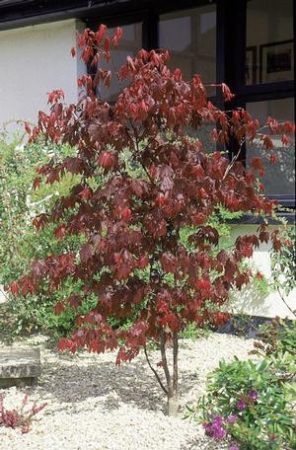Post category: Types and Uses
Trees carry their branches on a single stem, or trunk. Shrubs have a number of stems at ground level. Trees are generally larger than shrubs, but there are exceptions; dwarf trees – still truly trees – might be only a few feet tall.
Evergreen or deciduous
Trees and shrubs are either evergreen – retaining their leaves all year round – or deciduous – dropping their leaves each autumn. Trees that bear cones instead of flowers are called conifers. Evergreens can be broad-leaved evergreens such as holly and laurel; conifers with needles such as spruce and pine; or conifers with soft foliage such as lawson’s cypress and thuya.

Uses of trees and shrubs
Trees and shrubs are used in gardens for decorative purposes. Trees fill some of the space of the garden, counterbalancing the flat areas. They give privacy and provide a backdrop for smaller plants. Shrubs are more ornamental and provide variety of interest. Trees and shrubs are best planted in combination, to create a pleasing decorative effect.
Specimens
Exceptionally beautiful trees or shrubs can be planted as single specimens in a lawn area where their special qualities are put on show. Use only one specimen in a small lawn, or a small number of isolated specimens in a large lawn; otherwise the effect is lost.

Other uses
Climbers are used to decorate walls and fences. These woody plants make good use of vertical space that is often wasted. Some trees and shrubs make good hedges and screens. They provide privacy and respite from noise and dust. Evergreens are best against noise. Deciduous trees are best against dust, removing it each year when the leaves fall. Low-growing shrubs can be used as ground-cover plants to clothe the soil surface and help to keep weeds under control.


